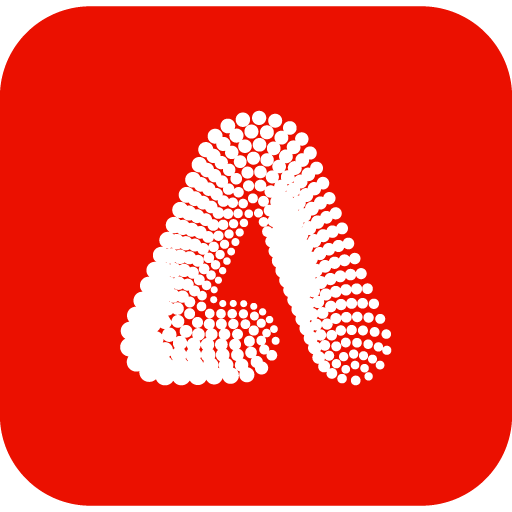
Adobe Firefly & Capture: Complete Buyer's Guide
The Creative Cloud-integrated AI typography solution that transforms natural language prompts into dynamic text effects while providing contextual font intelligence for design professionals.
Adobe Firefly & Capture represents Adobe's strategic entry into AI-powered typography, combining generative text effects with intelligent font matching within the Creative Cloud ecosystem.
Market Position & Maturity
Market Standing
Adobe occupies a unique position in the AI typography market by targeting creative professionals rather than enterprise font management or cost-conscious users [140][152][155].
Company Maturity
Adobe's entry into AI typography represents strategic expansion of existing Creative Cloud capabilities rather than standalone product development, indicating mature organizational commitment to AI integration across creative tools.
Industry Recognition
Adobe's broader Creative Cloud platform maintains established market leadership in creative software, providing credibility foundation for AI typography adoption among design professionals.
Longevity Assessment
Adobe's Creative Cloud ecosystem provides significant market stability and customer retention advantages, with existing Creative Cloud users representing a captive audience for AI typography adoption [127][146].
Proof of Capabilities
Customer Evidence
Available case studies suggest SMB implementations typically require 2-3 weeks for Creative Cloud plugin integration, while enterprise deployments extend 8-12 weeks for full workflow integration [142][161][164].
Quantified Outcomes
Industry sources indicate AI tools can reduce font pairing time by approximately 30% [138].
Market Validation
The broader designer community shows 91% belief that AI tools are useful for typography work [133][167], with 45% citing font pairing suggestions as a top valuable application [133][167].
AI Technology
Adobe Firefly employs generative AI technology that responds to natural language prompts to create dynamic text effects, representing a significant departure from traditional font pairing algorithms [140][152][155].
Architecture
Capture utilizes AI-powered image analysis to suggest matching fonts from uploaded visual references [144][148].
Primary Competitors
Adobe competes in the AI typography market against enterprise leaders like Monotype with 150K+ font libraries [136][139], free alternatives like Fontjoy's deep learning pairing engine [125][135].
Competitive Advantages
Adobe's Creative Cloud ecosystem integration eliminates workflow fragmentation affecting 75% of designers using multiple platforms [140][156]. The generative text effects responding to natural language prompts represent unique capabilities unavailable in traditional pairing tools [140][152][155].
Market Positioning
Adobe positions as creative-focused alternative to enterprise font management solutions and cost-effective standalone tools, targeting the intersection of AI typography adoption and Creative Cloud ecosystem investment.
Win/Loss Scenarios
Adobe wins when Creative Cloud integration is essential, generative typography capabilities add value, and subscription costs align with broader Creative Cloud benefits. Alternatives merit consideration when comprehensive font libraries are required, budget constraints favor one-time purchases, or specialized typography expertise exceeds Adobe's generative focus.
Key Features

Pros & Cons
Use Cases
Pricing
Featured In Articles
Comprehensive analysis of AI Font Pairing Tools for AI Design for AI Design professionals. Expert evaluation of features, pricing, and implementation.
How We Researched This Guide
About This Guide: This comprehensive analysis is based on extensive competitive intelligence and real-world implementation data from leading AI vendors. StayModern updates this guide quarterly to reflect market developments and vendor performance changes.
218+ verified sources per analysis including official documentation, customer reviews, analyst reports, and industry publications.
- • Vendor documentation & whitepapers
- • Customer testimonials & case studies
- • Third-party analyst assessments
- • Industry benchmarking reports
Standardized assessment framework across 8 key dimensions for objective comparison.
- • Technology capabilities & architecture
- • Market position & customer evidence
- • Implementation experience & support
- • Pricing value & competitive position
Research is refreshed every 90 days to capture market changes and new vendor capabilities.
- • New product releases & features
- • Market positioning changes
- • Customer feedback integration
- • Competitive landscape shifts
Every claim is source-linked with direct citations to original materials for verification.
- • Clickable citation links
- • Original source attribution
- • Date stamps for currency
- • Quality score validation
Analysis follows systematic research protocols with consistent evaluation frameworks.
- • Standardized assessment criteria
- • Multi-source verification process
- • Consistent evaluation methodology
- • Quality assurance protocols
Buyer-focused analysis with transparent methodology and factual accuracy commitment.
- • Objective comparative analysis
- • Transparent research methodology
- • Factual accuracy commitment
- • Continuous quality improvement
Quality Commitment: If you find any inaccuracies in our analysis on this page, please contact us at research@staymodern.ai. We're committed to maintaining the highest standards of research integrity and will investigate and correct any issues promptly.